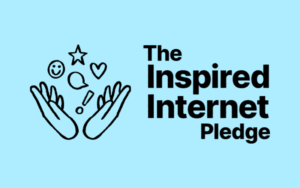What is media literacy, and why is it important?
Media literacy is the ability to consume, engage with, and create media critically (e.g., identifying fake information on social media and assessing its impact). Media literacy is important because:
- As children engage with media, they can develop their critical thinking skills;
- Media literacy can promote positive development and reduce unhealthy behaviors in adolescents, such as drinking, smoking, substance use, and unhealthy diets;
- Media literacy can increase adolescents’ intent toward civic engagement; and
- In an age of misinformation and disinformation, it is increasingly important for young people to build their skills in separating accurate and reliable information from rumors, propaganda, and other forms of inaccurate information.
What is social-emotional learning (SEL), and why is it important?
Social-emotional learning (SEL) is the process through which all young people and adults acquire and apply the knowledge, skills, and attitudes to develop healthy identities, manage emotions and achieve personal and collective goals, feel and show empathy for others, establish and maintain supportive relationships, and make responsible and caring decisions.
The Collaborative for Academic, Social, and Emotional Learning (CASEL) is a leading organization in the field of SEL. It identifies five core competencies of SEL:
Self-awareness: the ability to understand one’s own emotions, thoughts, and values, and how they influence behavior across contexts
Self-management: the ability to manage one’s emotions, thoughts, and behaviors effectively in different situations and to achieve goals and aspirations
Social awareness: the ability to take the perspective of and empathize with others, including those from diverse backgrounds and cultures
Relationship skills: the ability to establish and maintain healthy and rewarding relationships with diverse individuals and groups
Responsible decision making: the ability to make constructive choices about personal behavior and social interactions based on ethical standards, safety concerns, and social norms
SEL leads to many benefits, such as improved academic outcomes and behaviors, higher levels of well-being, less crime and substance abuse, and better employment and mental health outcomes.
What is the relationship between media literacy and SEL?
SEL competencies are necessary for the development of media literacy skills. For example, with the ability to take the perspectives of others, understand how others feel, and make responsible decisions, children are less likely to post unhealthy and hurtful messages on social media.
When children and adolescents are developing media literacy skills, they are also developing social-emotional competencies. For example, when children and adolescents are considering:
- How or what a message wants them to think, they are developing self-awareness, perspective-taking, and social awareness.
- What they should do when seeing a message, they are practicing self-management.
- Who a message is for, they are developing social awareness.
- If they can trust a message by others on a topic, they are developing relationship skills.
- How they can create healthy content on media, they are exercising decision-making.
How can parents foster their children’s development of media literacy skills and social emotional competencies?
As parents, you can ask your children questions to develop their media literacy skills and social-emotional competencies. When watching a commercial, movie, show, or playing a video game, you can ask them:
“What does this show/commercial want you to think? Why do they want you to think that?”
Asking this question helps children critically evaluate a message and its credibility. It requires them to consider others’ motivations, which serves to develop their perspective-taking, empathy, and relationship skills.
“How does this message make you feel?”
Asking this question helps children examine what elements within the media made them feel this way. It also helps children to develop their self-awareness as they become aware of, identify, and label their emotions.
“Who is this message for? How would it make them feel?”
Asking this question helps children examine who a message is for and its potential impact. It encourages children to take the perspective of others and imagine others’ emotions.
“What do you want to do after seeing this message?”
Asking this question helps children think about their actions in relation to media. It builds self-awareness and self-regulation by asking children to notice and manage their behaviors.
Additional Resources
- Common Sense Education has media literacy resources for classrooms.
- Media Literacy Now has resources for educators and parents on media literacy.
- The National Association for Media Literacy Education (NAMLE) has resources on media literacy, including resources for parents.
- CASEL is a leading organization in the field of SEL with resources on teaching SEL and developing SEL skills.




